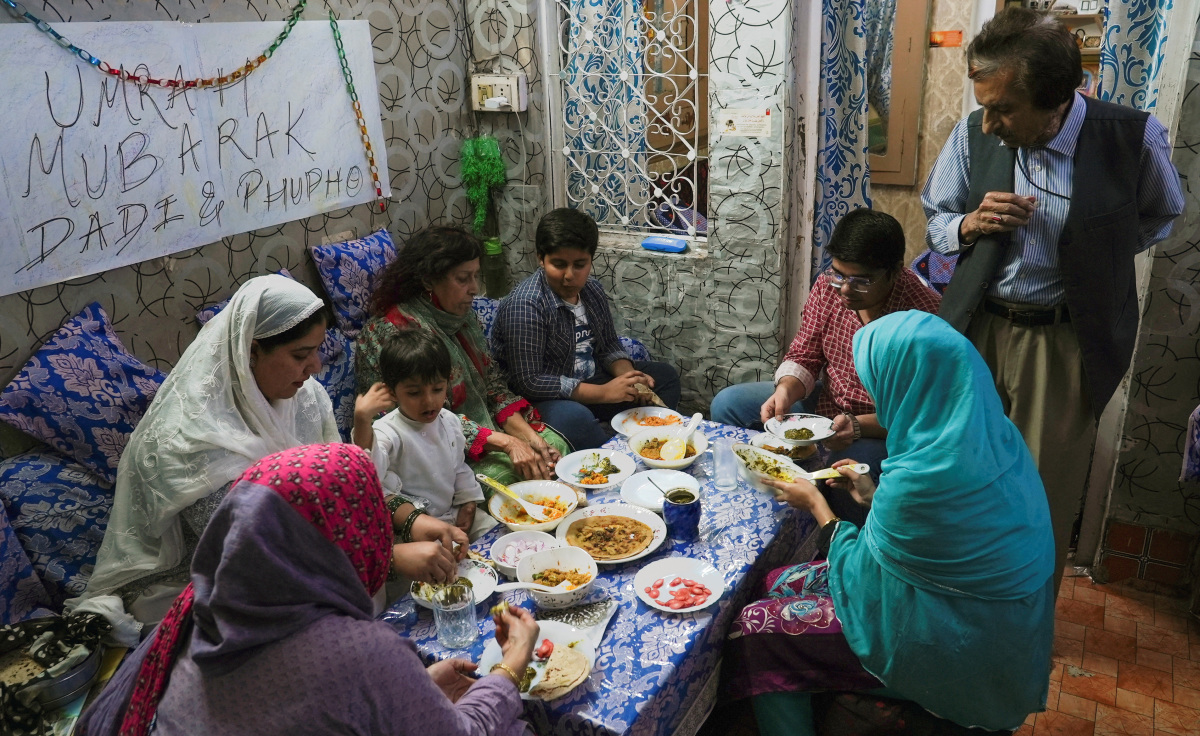Reuters
Syed Mohammed Talha says he is proud that his seven-year-old daughter attends a prestigious Montessori school in India’s national capital region.
The school is expensive, with annual fees at 255,000 rupees ($3,113), but the Muslim businessman says he is happy he can afford it.
“If I had a second child I couldn’t have afforded to send them both to this school,” said Talha, 42, who lives in Noida, a satellite city adjoining New Delhi.
“Having just one child allows us to be focused on her, give her a good education, lots of facilities, there are many benefits.”
Talha’s pleasure in having a small family underlines a growing trend among India’s minority Muslims, long known for large families with the highest population growth rate across India’s religious communities.
With India set to overtake China and become the world’s most populous nation this month, the shrinking of its Muslim families underlines the success of its decades-old population control programmes and signals demographic stability, experts said.
Reuters spoke to six Muslim men and women as well as seven community leaders, population experts and Islamic scholars. All agreed there was a marked increase in awareness among Indian Muslims about birth control and family planning.
Muslims are India’s second largest religious community and accounted for 14.2% of the 1.2 billion population, according to the once in 10 years census in 2011. The majority Hindus accounted for 79.8%.
The 2021 census has been delayed but the United Nations has projected India’s population will touch 1.42 billion this month. The country’s Muslim population is the world’s third-largest after Indonesia and Pakistan
The trend of smaller Muslim families has become visible in the last 15 years, with the National Family Health Survey showing a fall in the Muslim fertility rate – the average number of children a woman has – to 2.4 in 2019-21 from 2.6 in 2015-16 and 3.4 in 2005-06.
Although at 2.4 it is still higher than all other communities, the decline is also the fastest, almost halving from 4.4 in 1992-93.
GRAPHIC: India’s decadal population growth rate by religious groups –
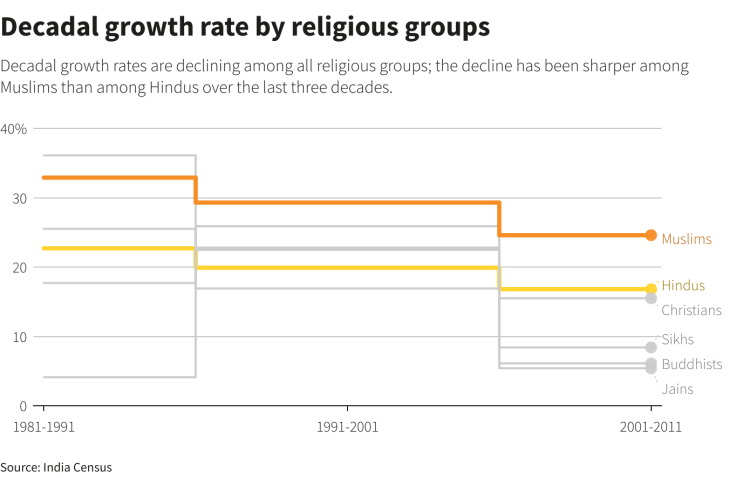
ISLAM AND BIRTH CONTROL
In a community that is mostly conservative, some Muslim priests, or imams, have played a large role in bringing about the change.
“There is a misconception among Muslims that Islam doesn’t allow the use of birth control measures,” said Maulana Khalid Rasheed, the imam of the Lucknow Eidgah in Uttar Pradesh, India’s most populous state.
“But the shariat talks of family planning,” he said referring to Islam’s sacred laws. “It is our responsibility to clear these misconceptions. We have conducted awareness programmes, made appeals, speeches about what shariat has said about such issues.”
Experts said more needs to be done to target less educated, poorer Muslims living outside the cities.
Government health workers in parts of the eastern state of Bihar said they regularly meet leaders of local mosques and request them to suggest birth control to men after Friday prayers but the results have not been encouraging.
“Islam advocates wholesome families and it is for people to decide how many children they want to have,” said Ahmed Daikundh, the custodian of the Al Azar mosque in Kishanganj, an impoverished rural district in Bihar.
Although birth rates were high in the area, Daikundh said his generation was having fewer children compared to the previous.
“We are seven brothers and four sisters and each of us has four or five children,” he said.
Shahid Parvez, a handicrafts exporter in Moradabad city in Uttar Pradesh and a relatively wealthy Muslim, said he was one of six siblings. The 65-year-old said he made sure he had a small family – he has two sons and one daughter – and that his children went to university.
His daughter Muneeza Shahid, who is a teacher in Delhi and got married recently, is not planning to have children immediately but finances are not the reason for that, she said.
“We want to live life for ourselves also,” she said.
UNMET NEED
Still, attitudes were changing among poorer Muslims too, especially the younger generation, said Poonam Muttreja, executive director of voluntary organization Population Foundation of India.
“Young people are exposed to digital media and they know how the other half lives, not the Hindus, but the better off,” she said.
Experts say the public health system is now unable to keep up with the demand for birth control services from people who are aware about their usefulness, also called an unmet need.
Government data from 2019-21 indicates 11.8% of the Muslim population had an unmet need to help space out or limit children. The data also shows that the Muslim fertility rate of 2.4 is fast dropping toward the Hindu rate of 1.94.
GRAPHIC: Share in India’s total population by religious groups –
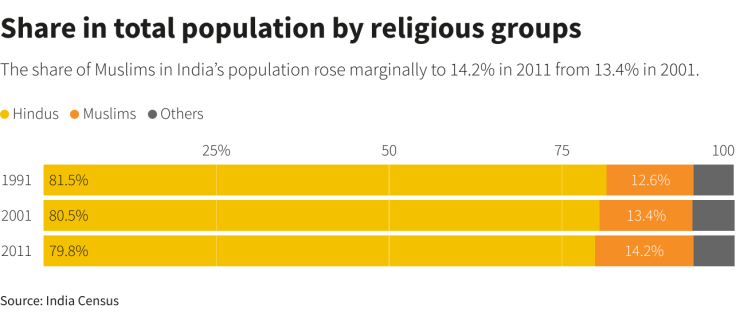
S.Y. Quraishi, the author of a book titled “The Population Myth – Islam, Family Planning and Politics in India”, said the fall in fertility among Muslims counters frequent criticism from Hindu nationalist politicians and their claims about a soaring Muslim population.
“The propaganda that Muslims are overtaking the Hindus is absurd,” the former top bureaucrat said.
“Muslims are adopting family planning much faster than Hindus and if you meet their unmet need, they will do better.”
($1 = 81.9100 Indian rupees)
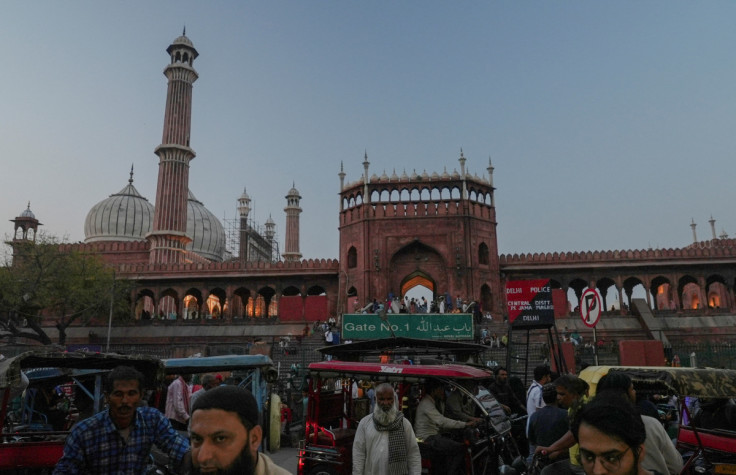
Reuters
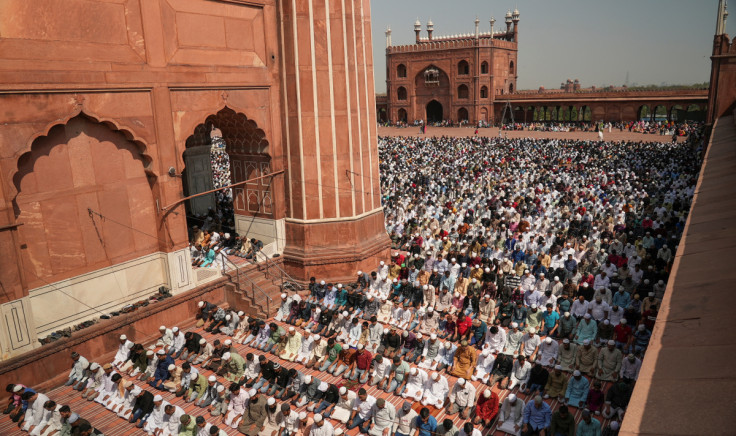
Reuters
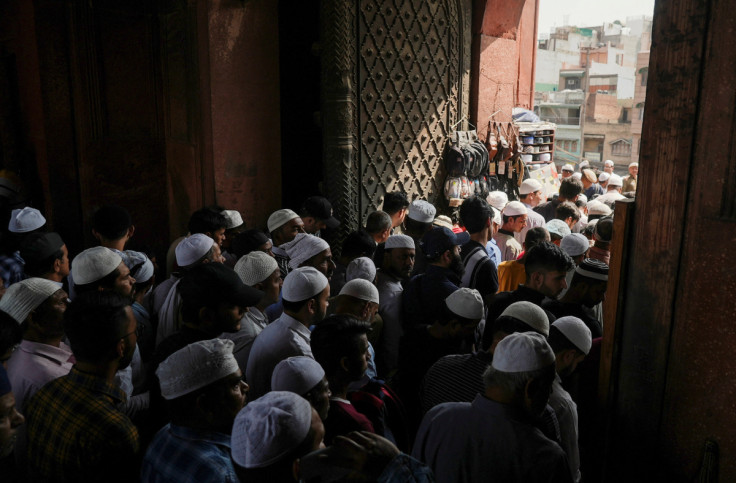
Reuters
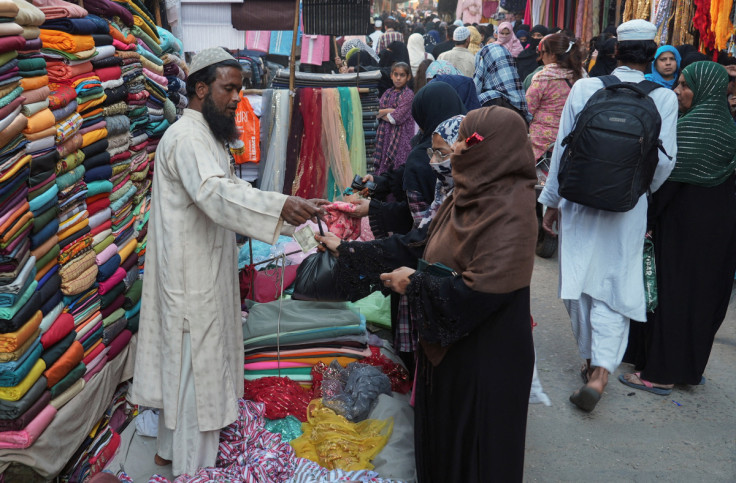
Reuters

